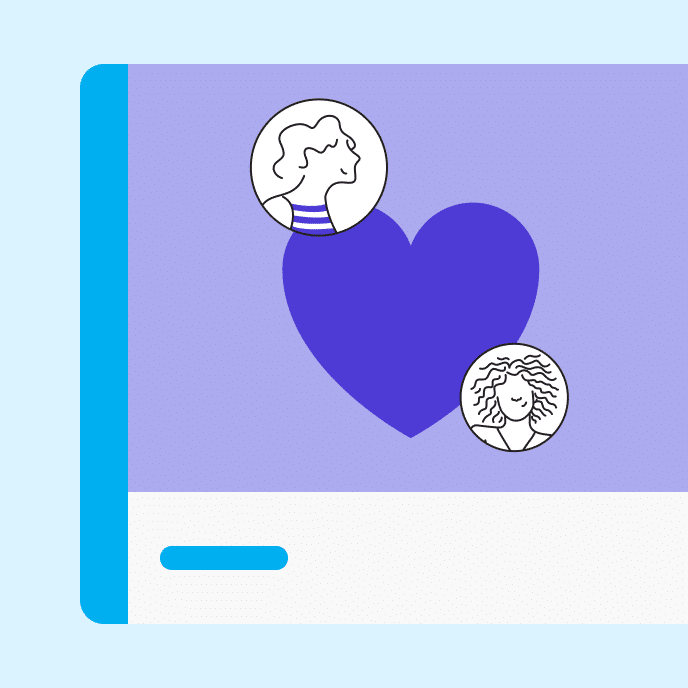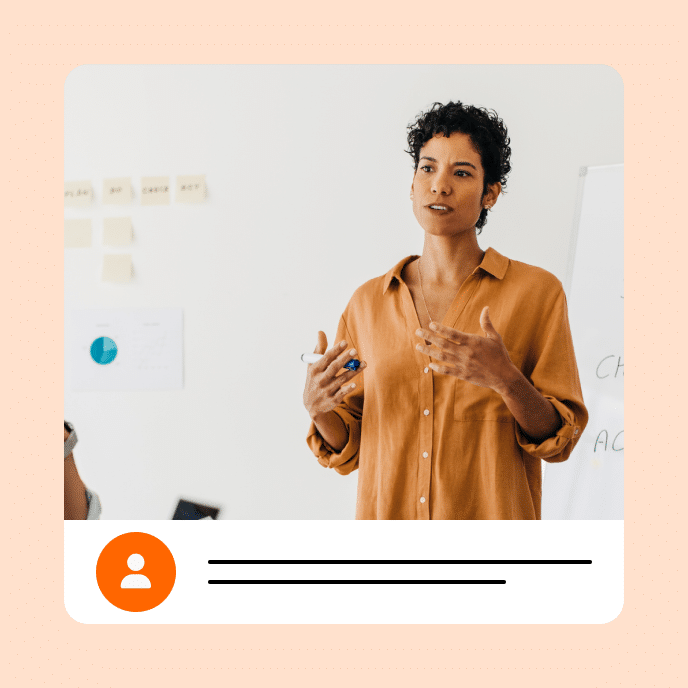Teacher vs. Instructional Designer: Key Differences and Similarities
Teachers and instructional designers shape learning in different ways. Discover their unique roles and how their skills overlap.

From classroom to curriculum: How teachers and instructional designers shape learning
At first glance, the roles of a classroom teacher and instructional designer might seem quite different. Teachers are seen as frontline educators, directly engaging with students in classrooms. Meanwhile, instructional designers craft educational content and experiences behind the scenes.
While their responsibilities may differ, their skill sets share some key similarities, especially when creating effective learning experiences. In this blog post, we’ll explore similarities and differences in the skillsets of teachers and instructional designers and how their overlapping abilities contribute to the broader educational landscape.
Key Takeaways
Key similarities between teachers and instructional designers
At the core, teachers and instructional designers share a common goal: helping students learn. Both professionals are dedicated to creating effective learning experiences that engage and empower students in physical classrooms or online learning environments. Let’s take a look at other similarities.
- Understanding learning theories and pedagogy: Teachers and instructional designers must deeply understand their audience and how they learn. Depending on their students’ needs, they often draw from the behaviorist, constructivist, cognitive, or adult learning theory to teach or design courses that maximize learning outcomes.
- Content expertise: Both roles require subject matter expertise. Teachers bring in-depth knowledge of their curriculum, while instructional designers may have specialized knowledge in structuring content for optimal learning.
- Focus on outcomes: Whether achieving specific learning objectives in a classroom or designing a course with measurable success metrics, both roles aim to help learners achieve specific learning outcomes.
- Adaptability and flexibility: Teachers adjust their methods based on student feedback, class behavior, and real-time assessments, quickly pivoting if something isn’t working to maintain engagement. Similarly, instructional designers must be flexible, tailoring content to diverse audiences and revising it based on feedback or pilot testing to improve learning experiences.
- Strong communication skills: Teachers make complex ideas accessible by adjusting language and using various formats to suit the diverse learning styles in their classrooms. Instructional designers create engaging content and work with subject matter experts or use technology to create personalized learning pathways and instant feedback to turn complex information into learner-friendly materials.

Differing approach and scope to learning
Teachers and instructional designers have distinct approaches, scopes, and tools for creating effective learning experiences. While both aim to help students succeed, their methods of achieving this goal differ significantly.
Teachers often work directly with students, adjusting their teaching strategies in real-time based on immediate feedback and classroom dynamics. In contrast, instructional designers focus on the bigger picture, crafting structured, long-term learning experiences and resources, often behind the scenes.
Let’s take a closer look at what sets these two roles apart.
1. Role and focus
Teachers’ and instructional designers’ direct involvement with students and content creation differ.
- Teachers: Teachers interact directly with students, deliver lessons, assess learning, and provide feedback. Their focus is on day-to-day classroom management, fostering a positive learning environment, and adapting content in real-time to meet students’ needs.
- Instructional Designers: On the other hand, instructional designers work more behind the scenes. Their job is to design the overall learning experience, whether it’s for a traditional classroom or an online course. They focus on creating, organizing, and offering project management focused on instructional materials that support learning, from course structures to assessments and multimedia content.
2. Scope of work
The scope of work varies for teachers and instructional designers, with one focusing on immediate classroom interaction and the other on broader course design.
- Teachers: The scope for teachers is more interactive and dynamic. They plan and teach lessons, assess student progress, and adapt their approach based on immediate feedback. Teachers must also manage classroom behavior, foster student relationships, and sometimes juggle administrative tasks.
- Instructional Designers: Instructional designers typically work on a larger scale. They design entire courses or learning modules and create training materials, working with subject matter experts (SMEs) to curate effective content. Instructional designers also often focus on aligning learning goals with assessments and use principles from educational psychology to ensure the course is engaging and effective.
3. Tools and skills
Each role utilizes tools and skills to enhance learning, from traditional methods to specialized digital tools.
- Teachers: Teachers often use traditional teaching methods like textbooks, whiteboards, and in-class activities. However, with the rise of digital tools, many teachers now use platforms like Google Classroom, Zoom, and educational apps to enhance engagement. Teachers also use formative assessments (quizzes, discussions, etc.) to gauge student understanding.
- Instructional Designers: Instructional designers work with a broader range of specialized tools. These include course authoring software, learning management systems, and multimedia tools for creating engaging e-learning content. The best instructional designers are often familiar with principles like Bloom’s Taxonomy, ADDIE (Analysis, Design, Development, Implementation, and Evaluation), and other instructional design frameworks.
4. Engagement strategies
Teachers and instructional designers engage learners through real-time interaction and self-paced, multimedia-driven experiences, often with overlap.
- Teachers: Engagement in the classroom is often achieved through active teaching, real-time discussions, and spontaneous interactions. Teachers can immediately adjust their approach based on student reactions, asking questions, offering explanations, or even changing the lesson plan to meet the learners where they are.
- Instructional Designers: Instructional designers focus on creating engaging, self-paced learning experiences. They often use multimedia (videos, podcasts, interactive simulations) to capture attention. Their work is more about designing students’ paths, ensuring the learning journey is coherent, interactive, and adaptable to various learning styles.
From teacher to instructional designer
If you’re a teacher considering transitioning into instructional design, you’re already equipped with many valuable skills that hiring managers seek. As a teacher, you’ve honed your ability to understand learner needs, create engaging content, and assess learning progress—skills directly transferable to instructional design.
Both roles require a strong foundation in curriculum development, the ability to adapt content for different learning styles, and a passion for helping others succeed. Instructional designers, like teachers, must be excellent communicators and collaborators, as they often work with subject matter experts and other team members to craft compelling learning experiences.
Additionally, your experience with classroom technology and interactive tools can give you a head start in mastering the digital tools instructional designers use, such as learning management systems and e-learning authoring software. With a solid understanding of pedagogy and a knack for problem-solving, you’re already on the right path to creating engaging, learner-centered designs.
Two sides of the same coin
Whether you’re a teacher looking to transition into instructional design or simply curious about the differences between these two vital roles, understanding how each contributes to the learning process is key.
Ultimately, they both assess learners’ needs, design appropriate learning experiences, and adapt their methods to ensure effectiveness, contributing to developing learners’ knowledge and skills.
Want to learn more about how traditional teaching differs from instructional design? Explore more instructional design resources.
You may also like

Online Training for Mortals: 6 Tricks to Make Complex Concepts Easy to Understand
Simplify complex training and help employees learn faster with these six e-learning tricks.

